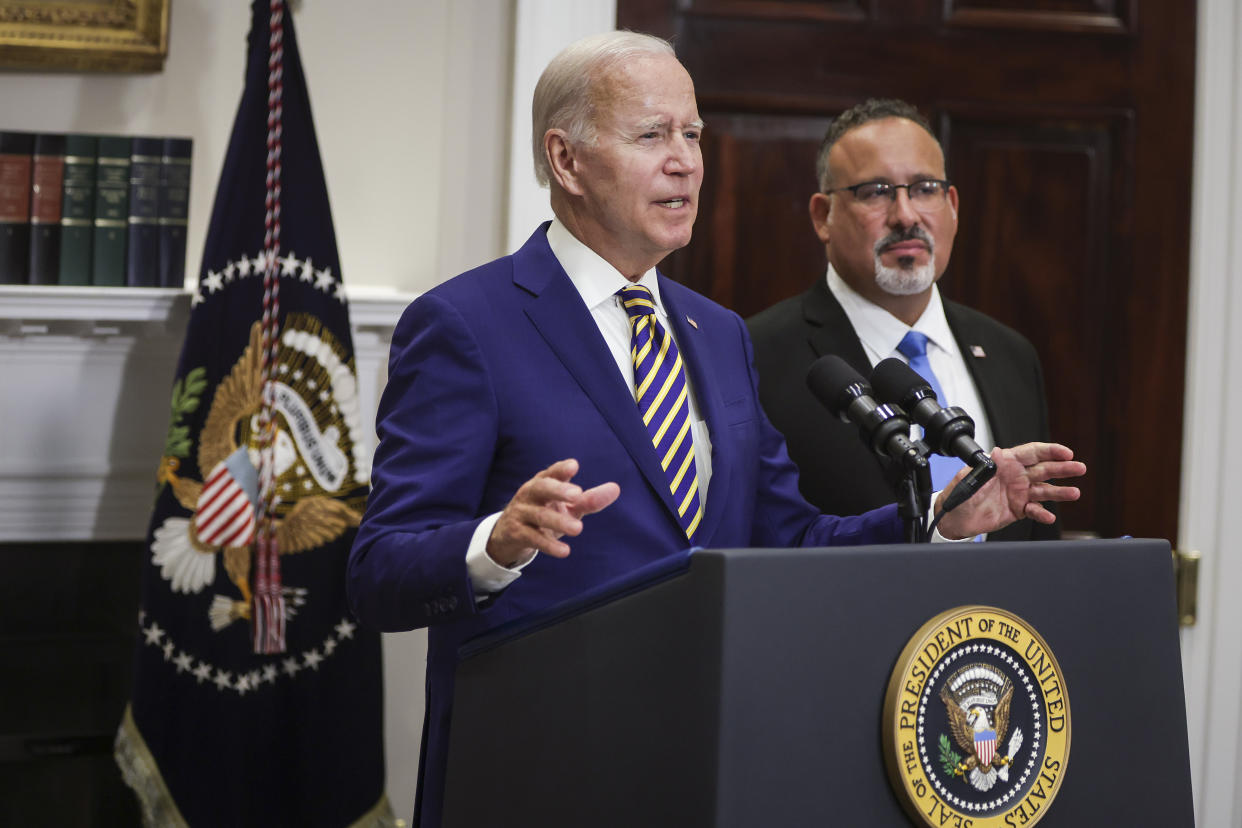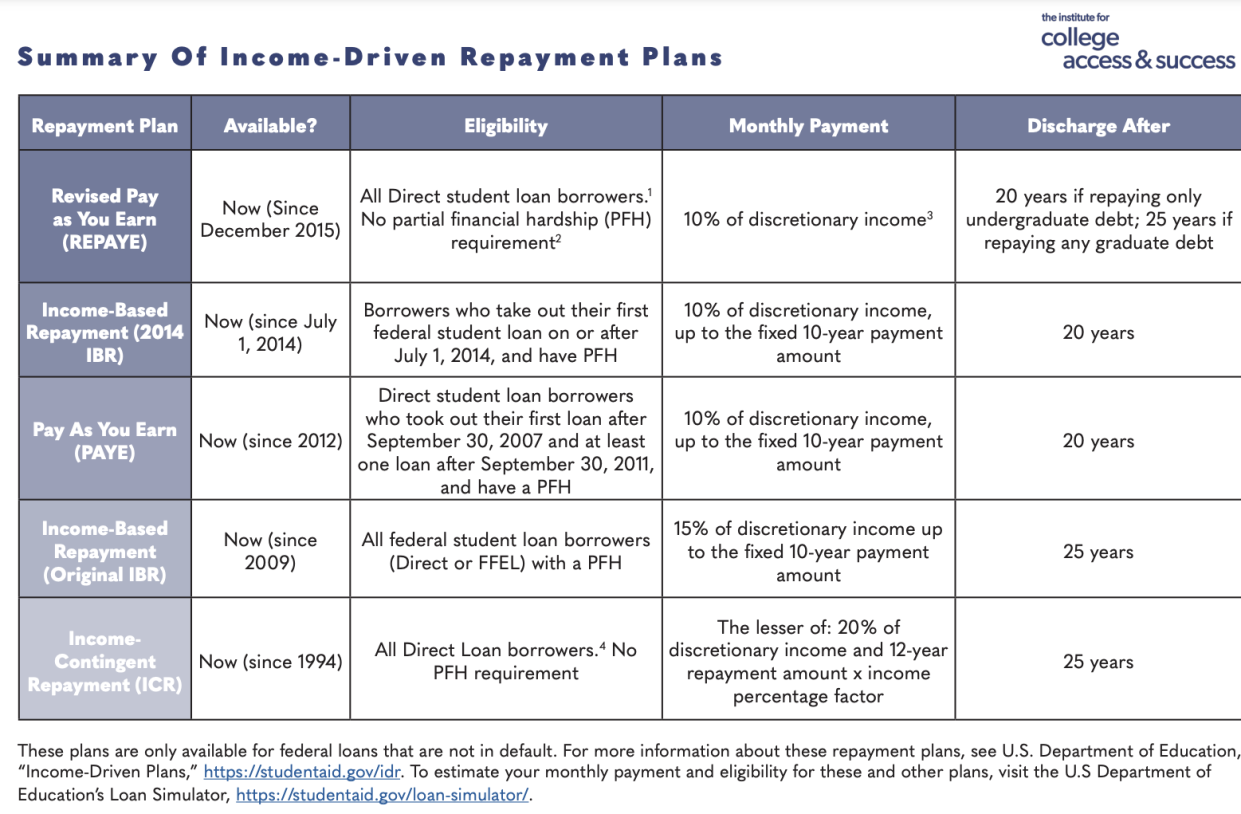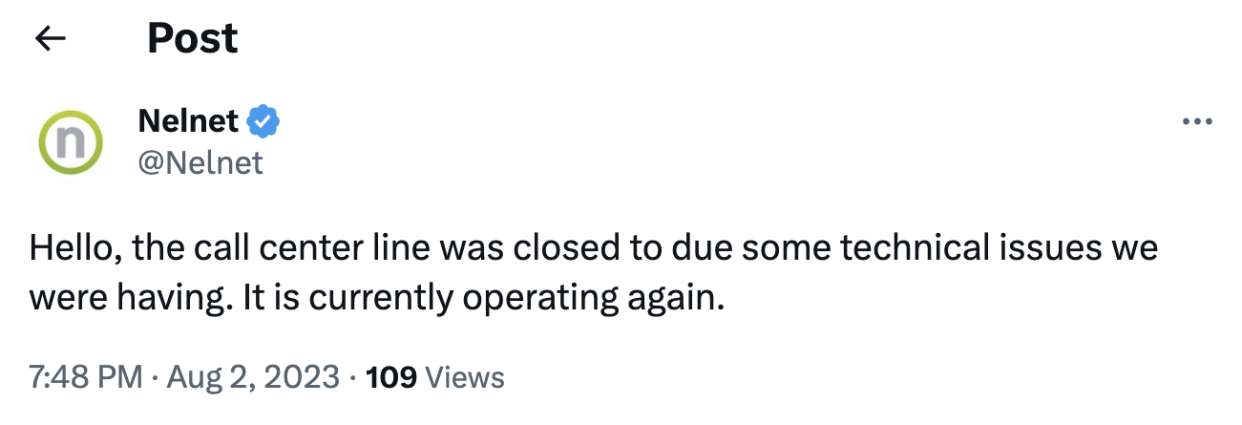Student loans: Biden officially launches new, affordable payment plan
The official application for the Department of Education's more affordable income-driven repayment plan for federal student loans opened Tuesday at StudentAid.gov.
The launch of the application portal follows a beta version that debuted three weeks ago.
The new plan, called Saving on A Valuable Education, or SAVE, improves on an earlier plan for federal student loan borrowers by lowering monthly payments, providing faster forgiveness for some, and preventing balances from growing due to unpaid interest. The next hurdle, of course, is getting folks to apply.
"Millions of borrowers can reduce their monthly student loan bills by enrolling in the SAVE plan, the most affordable repayment plan in history," Education Secretary Miguel Cardona said in a press release. "The SAVE plan is another huge step forward in President Biden’s tireless efforts to fix the broken student loan system, reduce the burden of student debt on working families, and put borrowers first."
"SAVE isn’t just about helping borrowers today, it’s about creating a more affordable pathway for millions of aspiring students who dream of earning college degrees and achieving the American dream," he added.

SAVE replaces the Revised Pay As You Earn Repayment Plan, or REPAYE, income-driven repayment plan. Borrowers currently enrolled in REPAYE will automatically be transferred to SAVE and have their monthly payments adjusted before student loan payments restart.
The federal forbearance that paused student loan payments during the pandemic is ending, with payment restarting in October and interest resuming in September.
Read more: Worried about when student loan repayments resume? These programs could help
Borrowers not enrolled in an income-driven plan or in a different income-driven plan, or IDR, can switch by applying on StudentAid.gov. As of July 1, unpaid interest on loans won’t be added to the principal when a borrower leaves any IDR plan, except the Income-Based Repayment (IBR) plan where capitalization is required by statute.
Some key aspects of SAVE that make it different from REPAYE include:
The most borrowers must pay toward their undergraduate loans is 5% of their discretionary income, down from 10%.
No borrower making less than 225% of the federal poverty level will have to make a monthly payment.
Loan balances will be forgiven after 10 years of payments — instead of 20 years — if the original loan balance is $12,000 or less.
Borrowers won't be charged with unpaid monthly interest, so balances won't grow if they make their payments — even if the monthly payment is $0 because their income is low.
"The SAVE plan…will cut payments to zero for borrowers making roughly $15 an hour, save all other borrowers at least $1,000 a year compared to other income-driven repayment plans, and stop runaway interest that leaves folks owing more than their initial loan," Under Secretary James Kvaal said in a press release.

However, "some aspects of SAVE will be implemented this summer, some not until July 1, 2024," Mark Kantrowitz, author and student loan expert, told Yahoo Finance. "In particular, the cut in the percentage of discretionary income for undergraduate debt from 10% to 5% will not be implemented until July 2024."
The decrease in discretionary income would effectively cut in half the amount that borrowers will have to pay each month for undergraduate loans only.
To help spread the word about the launch of SAVE, the Department collaborated with grassroots organizations like Civic Nation, the National Urban League, Rise, NAACP, the Student Debt Crisis Center, UnidosUS, and Young Invincibles.
"Young Invincibles knew sharing repayment information would be critical if repayments were restarted," Kristin McGuire, executive director of Young Invincibles, told Yahoo Finance. "The SAVE plan offers historically low payments and other benefits, but is not a substitute for debt cancellation — so we will keep up that fight while we inform borrowers of all the latest information."
Problems with loan servicers adds glitch to rollout
Typically borrowers sign up for income-driven repayment plans through their loan servicer. However, for the rollout of SAVE, borrowers can sign up with their loan servicer or directly on StudentAid.gov. But loan servicers are often borrowers’ primary contact when it comes to their student loans, and some borrower advocates worry that borrowers won't get the information they need about SAVE.
"Loan servicers have a bad track record of telling borrowers about their best payment options and quickly and accurately rolling out new relief programs," Abby Shafroth, co-director of advocacy at the National Consumer Law Center, told Yahoo Finance.
Servicers are also running into other problems before student loan payments restart.
For instance, Great Lakes, which is listed as a loan servicer on the Department of Education’s list of servicers, is now owned by Nelnet. The transition hasn’t been smooth. At the beginning of the month, Nelnet’s call center line shut down when borrowers tried to access the platform.

"Nelnet's call center shutdown makes you wonder whether they have the volume to handle the transition of Great Lakes borrowers and foreshadows the type of problems borrowers can expect as repayments start," Persis Yu, deputy executive director and managing counsel of the Student Borrowers Protection Center, told Yahoo Finance. "Will borrowers be able to get service or support from loan service providers and are providers actually ready to restart payments?"
Borrowers have also complained about other problems with loan servicers while trying to register for SAVE during the beta phase.
"We are hearing from people that servicers are simply miscalculating monthly payment amounts, sometimes dramatically causing people to have monthly payments several thousand dollars more than they should have," Thomas Gokey, policy director at The Debt Collective, told Yahoo Finance. "We are also hearing from people who tried to switch to SAVE to have their payment go down. Instead, their payment went up."
Other issues include loan servicers telling borrowers that it could take four weeks or more to process SAVE applications.
A Department of Education spokesperson said that the department is working with loan servicers to process applications faster, but if borrowers applied on the Federal Student Aid (FSA) website, applications would be processed quicker.
"The new plan offers a lot of potential help to borrowers, but it's still unclear if it will deliver," Shafroth said. "How helpful the plan actually is to borrowers depends on how well it is implemented."
Ronda is a personal finance senior reporter for Yahoo Finance and attorney with experience in law, insurance, education, and government. Follow her on Twitter @writesronda
Read the latest financial and business news from Yahoo Finance
